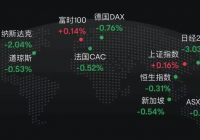Imagine cruising on the DeFi seas, yield dreams flowing like champagne, then boom, a $93 million iceberg hits.
Stream Finance, the DeFi platform known for its high-flying yield strategies, slammed the brakes on all deposits and withdrawals after an external fund manager reported a $93 million loss.
Cue the collective gasp across the crypto world.
Withdrawals suspended
Stream Finance candidly announced the blowup on X, confirming the loss was disclosed the previous day.
Yesterday, an external fund manager overseeing Stream funds disclosed the loss of approximately $93 million in Stream fund assets.
In response, Stream is in the process of engaging Keith Miller and Joseph Cutler of the law firm Perkins Coie LLP, to lead a comprehensive…
— Stream Finance (@StreamDefi) November 4, 2025
They brought in heavyweight legal squad Perkins Coie for an independent investigation, because when your ship’s taking on water, you better call in the experts.
The bad news is users are now caught in a freeze, withdrawals suspended, deposits on hold, and the hunt for liquid assets underway.
The team promises periodic updates, but user funds are stuck in limbo.
The official line: “We are actively withdrawing all liquid assets and expect this process to be completed soon.” Translation, hold tight, but things look messy.
Liquidity and asset exposure
The plot thickens with Stream’s native collateralised stablecoin, Staked Stream USD. You know what’s depegging, right? Before the official news dropped, XUSD was already wobbling off its $1 peg.
Community members noticed the deposit and withdrawal freeze days earlier, without so much as a heads-up.
An update on @StreamDefi :
Very unfortunate situation as I have funds in xUSD & xBTC.
TLDR everyone believes Stream has incurred losses, and that their assets will be redeemed at a haircut. Hearing 10-30% haircut as predictions. A lot of their portfolio is heavily looped so it… pic.twitter.com/8bX89ExQya
— AzFlin 🌎 (@AzFlin) November 3, 2025
Then came the plunge, XUSD crashed to as low as $0.51, and at writing, it’s barely hanging on at $0.29. 76% slide in 24 hours.
The founder of Labs flagged the drama hours before Stream’s public reveal, linking XUSD’s meltdown to a separate $100 million exploit on Balancer, another DeFi playground.
The timing of these hits has many eyes blinking, hinting at liquidity and asset exposure vulnerabilities lurking beneath DeFi’s shiny surface.
Real risks in DeFi
Stream Finance had just days prior admitted to discrepancies between their total value locked and numbers reported by DefiLlama, because, surprise, DefiLlama doesn’t count so-called recursive looping strategies as TVL.
Over the last few days, there have been a lot of questions about recursive looping, what it is, and why we use it.
Recursive looping is when a protocol loops its own asset to capture a spread in interest rates. For example, if you have an asset earning 15% that you can borrow…
— Stream Finance (@StreamDefi) October 30, 2025
To keep things transparent, they broke down user deposits versus total assets deployed, but analysts warn such differences in reporting methods make it nearly impossible to gauge real risk levels in DeFi.
This fiasco makes the situation harder, as there are already heightened regulatory eyes on DeFi and stablecoins, where depegging freakouts like XUSD’s can spark huge panic and liquidity drain. So it’s understandable why the entire DeFi ecosystem watches closely.
The big question is can they recover assets, compensate users, and patch the cracks in DeFi’s shiny facade?
Editor’s Take:
Another DeFi darling hits the iceberg — and this time, users are the ones left out in the cold.
Stream Finance’s $93 million blowup is more than a technical failure; it’s a reminder that even the sleekest smart contracts can’t patch over bad risk management.
If DeFi wants to earn trust again, it’s not innovation it needs next — it’s accountability.




